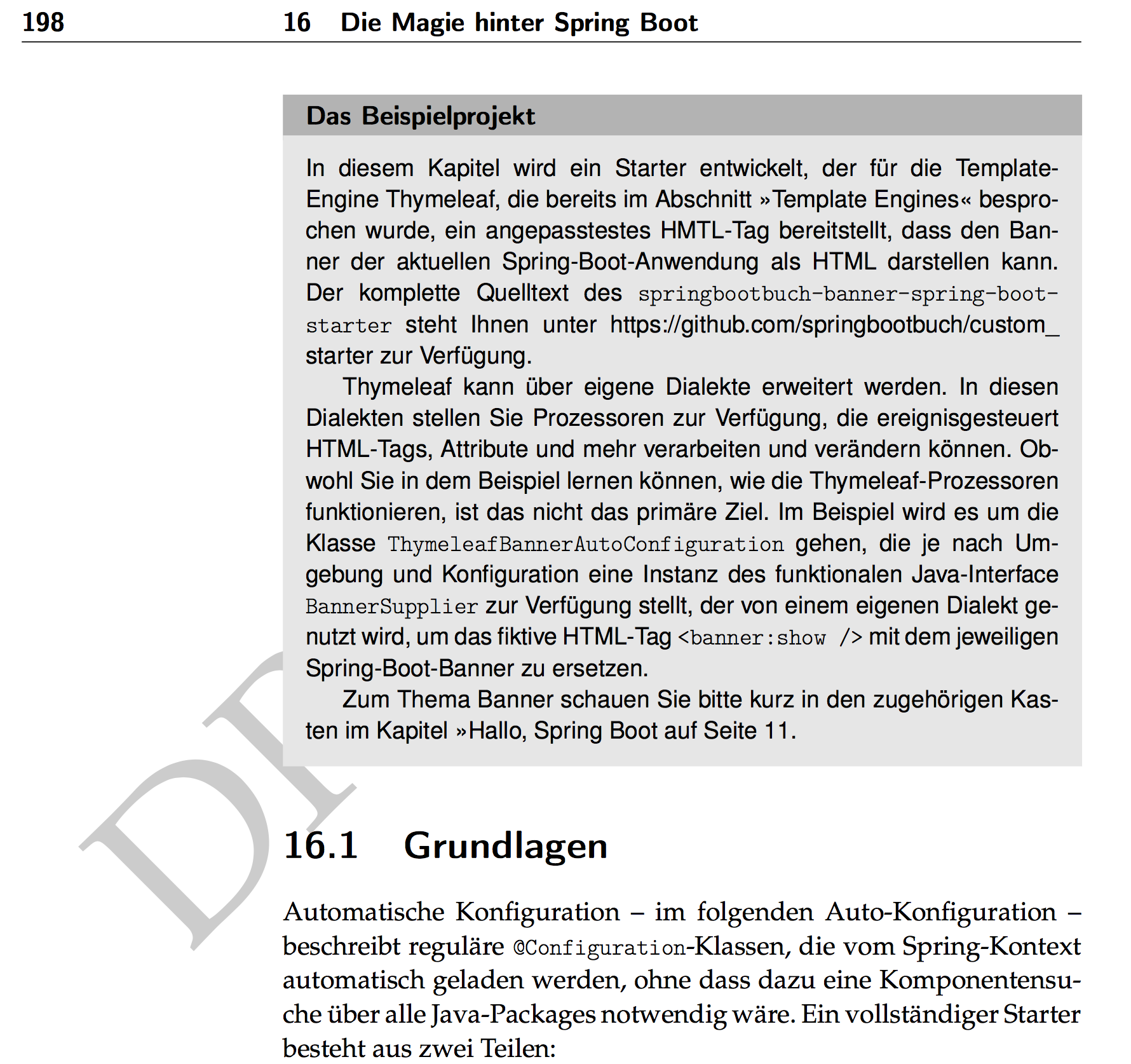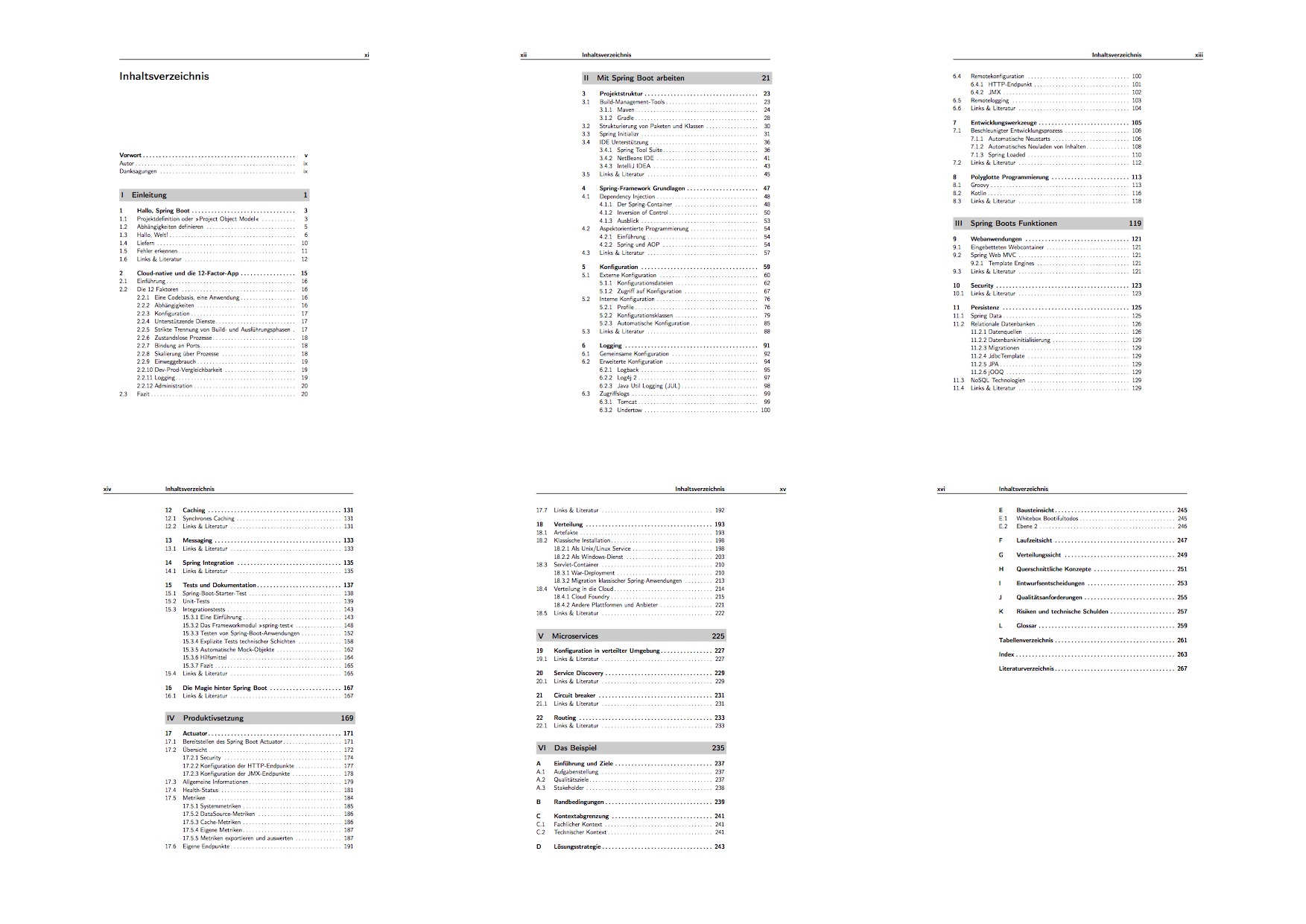I just stumbled upon an article that wants to show in great detail how to customize Spring Security inside a Spring Boot application.
It first adds the spring-boot-security-starter through
<dependency>
<groupId>org.springframework.boot</groupId>
<artifactId>spring-boot-starter-security</artifactId>
</dependency> |
<dependency>
<groupId>org.springframework.boot</groupId>
<artifactId>spring-boot-starter-security</artifactId>
</dependency>
Nothing wrong here: Together with @SpringBootApplication the starter configures Spring Security with the filter chain and all auth in the correct places. You dont’t have to add @EnableWebSecurity, in fact: you shouldn’t! It will turn the default auto configuration of your starter of.
Next, the article continuous on how to overwrite the generated user and password: I would go with the security.user.name and security.user.password properties if I wouldn’t have a good reason otherwise.
If I want to add more in-memory users, than I have to do some configuration. But: When extending WebSecurityConfigurerAdapter, just use the methods provided, no need to @EnableWebSecurity if you already have @SpringBootApplication on a class! Also no need to invent custom methods, just use the following:
package de.springbootbuch.actuators;
import org.springframework.context.annotation.Configuration;
import org.springframework.security.config.annotation.authentication.builders.AuthenticationManagerBuilder;
import org.springframework.security.config.annotation.web.configuration.WebSecurityConfigurerAdapter;
@Configuration
public class SecurityConfig
extends WebSecurityConfigurerAdapter {
@Override
protected void configure(AuthenticationManagerBuilder auth) throws Exception {
auth.inMemoryAuthentication().withUser("poef").password("fump").roles("ACTUATOR");
}
} |
package de.springbootbuch.actuators;
import org.springframework.context.annotation.Configuration;
import org.springframework.security.config.annotation.authentication.builders.AuthenticationManagerBuilder;
import org.springframework.security.config.annotation.web.configuration.WebSecurityConfigurerAdapter;
@Configuration
public class SecurityConfig
extends WebSecurityConfigurerAdapter {
@Override
protected void configure(AuthenticationManagerBuilder auth) throws Exception {
auth.inMemoryAuthentication().withUser("poef").password("fump").roles("ACTUATOR");
}
}
If you want to role your own UserDetailsService implementation, it’s even easier:
package de.springbootbuch.actuators;
import java.util.Collections;
import org.springframework.context.annotation.Bean;
import org.springframework.context.annotation.Configuration;
import org.springframework.security.core.userdetails.User;
import org.springframework.security.core.userdetails.UserDetailsService;
import org.springframework.security.core.userdetails.UsernameNotFoundException;
@Configuration
public class SecurityConfig {
@Bean
public UserDetailsService userDetailsService() {
return (String username) -> {
if("poef".equals(username))
return new User("poef", "fump", Collections.EMPTY_LIST);
else
throw new UsernameNotFoundException("n/a");
};
};
} |
package de.springbootbuch.actuators;
import java.util.Collections;
import org.springframework.context.annotation.Bean;
import org.springframework.context.annotation.Configuration;
import org.springframework.security.core.userdetails.User;
import org.springframework.security.core.userdetails.UserDetailsService;
import org.springframework.security.core.userdetails.UsernameNotFoundException;
@Configuration
public class SecurityConfig {
@Bean
public UserDetailsService userDetailsService() {
return (String username) -> {
if("poef".equals(username))
return new User("poef", "fump", Collections.EMPTY_LIST);
else
throw new UsernameNotFoundException("n/a");
};
};
}
Notice that there’s just one bean of type UserDetailsService.
And finally, if you want to overwrite some settings of Spring Boot Starter Security defaults, it’s the order of WebSecurityConfigurerAdapter that matters.
This one
package de.springbootbuch.actuators;
import org.springframework.boot.actuate.autoconfigure.ManagementServerProperties;
import org.springframework.context.annotation.Configuration;
import org.springframework.core.annotation.Order;
import org.springframework.security.config.annotation.web.builders.HttpSecurity;
import org.springframework.security.config.annotation.web.configuration.WebSecurityConfigurerAdapter;
@Configuration
@Order(ManagementServerProperties.ACCESS_OVERRIDE_ORDER)
public class SecurityConfig
extends WebSecurityConfigurerAdapter {
@Override
protected void configure(final HttpSecurity http)
throws Exception {
http
.httpBasic()
.and()
.authorizeRequests()
.antMatchers("/metrics/counter**")
.permitAll()
.antMatchers("/metrics/**")
.authenticated();
}
} |
package de.springbootbuch.actuators;
import org.springframework.boot.actuate.autoconfigure.ManagementServerProperties;
import org.springframework.context.annotation.Configuration;
import org.springframework.core.annotation.Order;
import org.springframework.security.config.annotation.web.builders.HttpSecurity;
import org.springframework.security.config.annotation.web.configuration.WebSecurityConfigurerAdapter;
@Configuration
@Order(ManagementServerProperties.ACCESS_OVERRIDE_ORDER)
public class SecurityConfig
extends WebSecurityConfigurerAdapter {
@Override
protected void configure(final HttpSecurity http)
throws Exception {
http
.httpBasic()
.and()
.authorizeRequests()
.antMatchers("/metrics/counter**")
.permitAll()
.antMatchers("/metrics/**")
.authenticated();
}
}
together with endpoints.metrics.sensitive = false (needed since Spring Boot 1.5.1 to turn off the handler interceptor that secures Actuator endpoints without even having Security on the class path), it overwrites the settings for the Actuator endpoints, allowing unauthorized access to /metrics/counter but not to the other metrics by putting the configuration at the right place: @Order(ManagementServerProperties.ACCESS_OVERRIDE_ORDER).
My tip for Spring Boot and Spring Security: Don’t think too much, don’t try to be smarter than the starter. Don’t turn off the defaults completely if you don’t know what you’re doing. If you extend a WebSecurityConfigurerAdapter, make sure you put it into the right order through @Order and one of those XXX_OVERRIDE_ORDER constants. And also: Use the provided hooks!
The samples here are from my upcoming German Spring Boot Buch, which will be available right in time with Spring Boot 2.0 in autumn.
Filed in English posts
|

